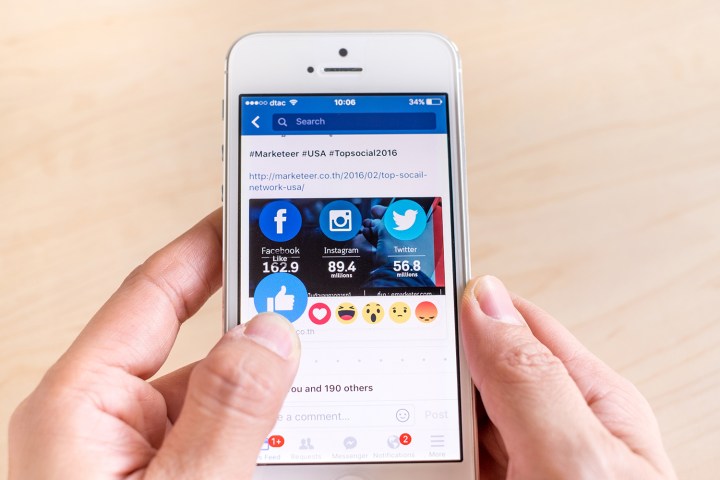
Specifically, the new News Feed ranking will favor content you’ve signaled “is important to you.” Posts topically or tonally similar to ones you’ve marked “see first” in the past will always appear above stories and photos from folks you’ve “unfollowed” and hidden,” for instance. And more broadly speaking, pics and posts from people you’ve designated as “priority” will bubble to the surface more frequently. “If you tend to like photos from your sister,” wrote Facebook Vice President Adam Mosseri in a blog post, “we’ll start putting her posts closer to the top of your feed so you won’t miss what she posted while you were away.”
Pages, which allow businesses, brands and organizations to share their stories and connect with people, aren’t getting the boot from your News Feed entirely, though. Instead, they’ll be ranked according to how subjectively “entertaining” and “informative” they are. News about a celebrity you follow closely, happenings around your hometown, or a recipe from a favorite chef might occasionally appear alongside shares from your closest friends. And within those personalized niches, Facebook said it will rank content considered “genuine” more highly than stories that might be construed as “misleading, sensational, and spammy.” Said Mosseri, “Our aim is to deliver the types of stories we’ve gotten feedback that an individual person wants to see. When people see content they are interested in, they are more likely to spend time on News Feed and enjoy their experience.”
It’s not the first major change Facebook has made to News Feed. Back in 2010, it made an effort to reduce game notifications like those from Zynga’s Farmville. And in 2015, it debuted a system that gave posts by friends prime placement and cut down on the number of hoaxes in in feeds. But those efforts haven’t been been enough, apparently. “We’ve heard from our community that people are still worried about missing important updates from the friends they care about,” said Mosseri.”Our top priority is keeping you connected to the people, places, and things you want to be connected to — starting with the people you are friends with on
The forthcoming tweaks won’t favor certain viewpoints over others, Facebook made sure to emphasize. The social network became embroiled in controversy earlier this year following accusations stemming from a Gawker report, since largely discredited, that the human team responsible for curating its Trending Topics section — the widget of personalized news that lives in the right-hand corner of
Publishers, for their part, won’t see the effects of the updates immediately. Pages that lean more heavily on “Page posts” will see “less of an impact” than those that rely largely on referral traffic — i.e., high-profile shares and reshares among lots of followers. But Facebook said that, on average, the update will cause a decline in readership of most Pages. “Overall, we anticipate that this update may cause reach and referral traffic to decline for some Pages,” said
The impact could be drastic for some organizations. According to market research company Parse.ly, more than 40 percent of news site referral traffic comes from Facebook. But at a meeting with members of the press in San Francisco, Mosserie sought to allay fears. He touted the success of initiatives like Instant Articles, a
But Facebook made clear, too, that it placed user experience first. “Ultimately, you know what’s most meaningful to you,” said Mosseri. “As News Feed evolves, we’ll continue building easy to use and powerful tools to give you the most personalized experience.”
Editors' Recommendations
- Facebook’s new controls offer more customization of your Feed
- Facebook to shake up its news content in a deal worth millions for publishers


